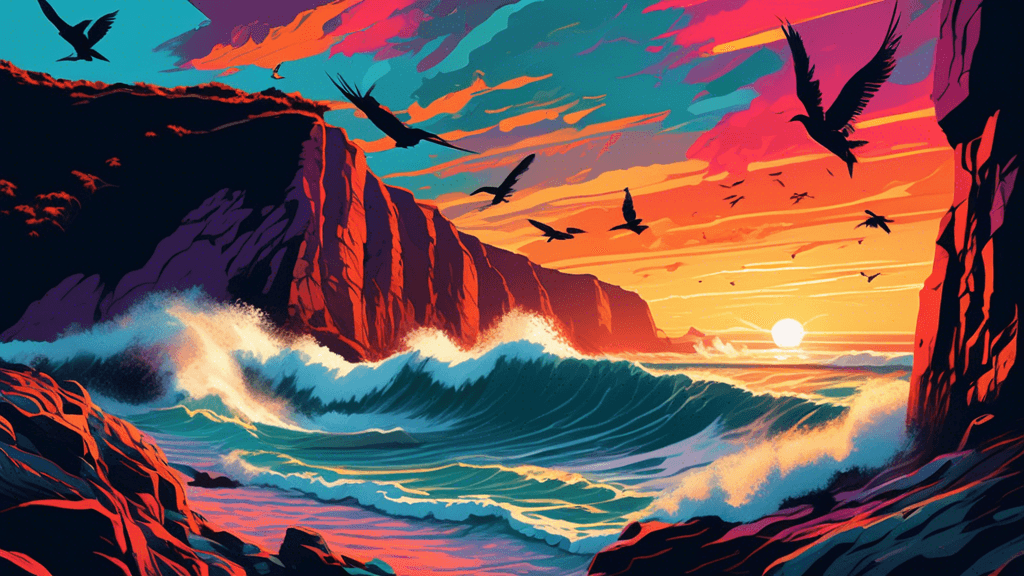
Exploring New Zealand's Dramatic Coastal Cliffs: The Chorus of the Cliffs
Share
Understanding New Zealand's Dramatic Coastal Cliffs
New Zealand, known for its jaw-dropping natural landscapes, offers an array of dramatic coastal cliffs that draw visitors from all around the globe. From the rugged outcrops of the South Island to the sweeping vistas of the North Island, these cliffs are not only a visual feast but also a testament to the geological forces that have shaped the land.
What Makes New Zealand's Coastal Cliffs Unique?
One might wonder, what sets these cliffs apart from other oceanic borders worldwide? First and foremost, it's the diverse geology. The coastal cliffs of New Zealand vary greatly in their composition—from sedimentary rocks formed from ancient marine organisms to igneous rocks born from volcanic activity. This geological mosaic not only tells the story of millions of years of earth's history but also creates a variety of ecosystems that support unique flora and fauna.
Additionally, the sheer remoteness of some cliffs adds to their untouched, pristine allure. These areas, largely preserved from human interference, offer a perfect snapshot of natural preservation and beauty.
The Role of Erosion in Shaping the Cliffs
Erosion plays a pivotal role in shaping these cliffs, continuously sculpting New Zealand's coastline into new and awe-inspiring forms. But how does this process work? The elements—water, wind, and sometimes even ice—gradually wear away the rock. Depending on the rock type, cliffs might erode quickly or slowly, forming everything from smooth, sweeping curves to jagged, abrupt drop-offs. This natural artistry not only creates breathtaking landscapes but also serves as a potent reminder of nature's enduring power and dynamism.
Spotlight on Key Locations
- Punakaiki (Pancake Rocks) on the West Coast: Known for its heavily eroded limestone, where the sea bursts through blowholes during high tides.
- Muriwai Beach: Famous for its rugged cliffs and the gannet colonies that take refuge there.
- Moeraki Boulders: Although not cliffs, these formations complement the nearby rugged cliff faces perfectly, showcasing unique geological spheres on the coast.
At each location, visitors can witness the ongoing interplay between land and sea, a dynamic that continues to shape the landscape in fascinating ways.
Conservation Efforts
While these cliffs provide stirring visuals and are a haven for diverse species, they are also fragile ecosystems vulnerable to the effects of climate change and human activity. Rising sea levels, increased storm intensity, and unchecked human access threaten the delicate balance of these environments. In response, local and national groups are continually working to ensure that these precious resources receive the protection they deserve.
Conservation efforts include restricted access during sensitive seasons, ongoing wildlife monitoring, and active engagement with the indigenous communities whose ancestral lands include these coastal regions. This carefully balanced approach aims to preserve both the beauty and the biodiversity of New Zealand's cliffs.
Visiting Responsibly
Eyeing a trip to these exceptional cliffs? Consider how you can make your visit sustainable. Adhering to marked paths, taking only photos, and leaving only footprints are just a few ways to help. Respect local guidelines and participate in eco-tourism initiatives that support environmental conservation.
By visiting responsibly, you contribute to the preservation of New Zealand's landscapes for future generations to enjoy.
The Call of New Zealand's Coastal Cliffs
The cliffs of New Zealand are more than just stunning natural features. They are vibrant, living landscapes that offer a symphony of sights, sounds, and stories that resonate deeply with those who walk their rugged paths. They challenge us to consider our impact on the world and inspire us to preserve its beauty.
Are you ready to heed the call of the cliffs? Embrace the opportunity to explore responsibly, and immerse yourself in the profound beauty and serenity that New Zealand's coastal cliffs have to offer. The chorus of the cliffs is calling—how will you answer?





